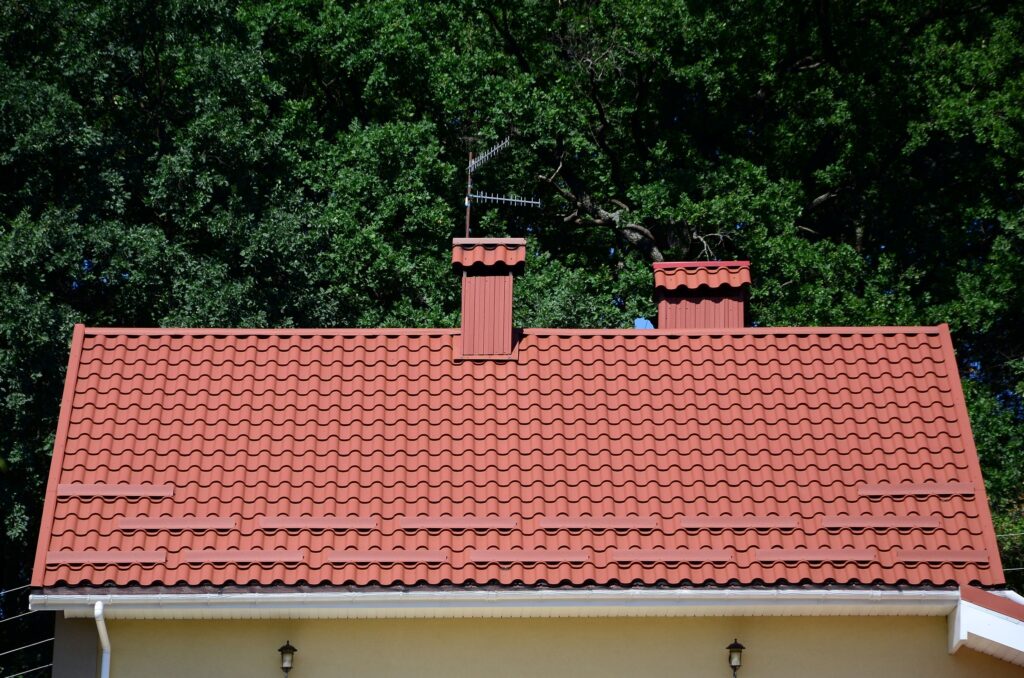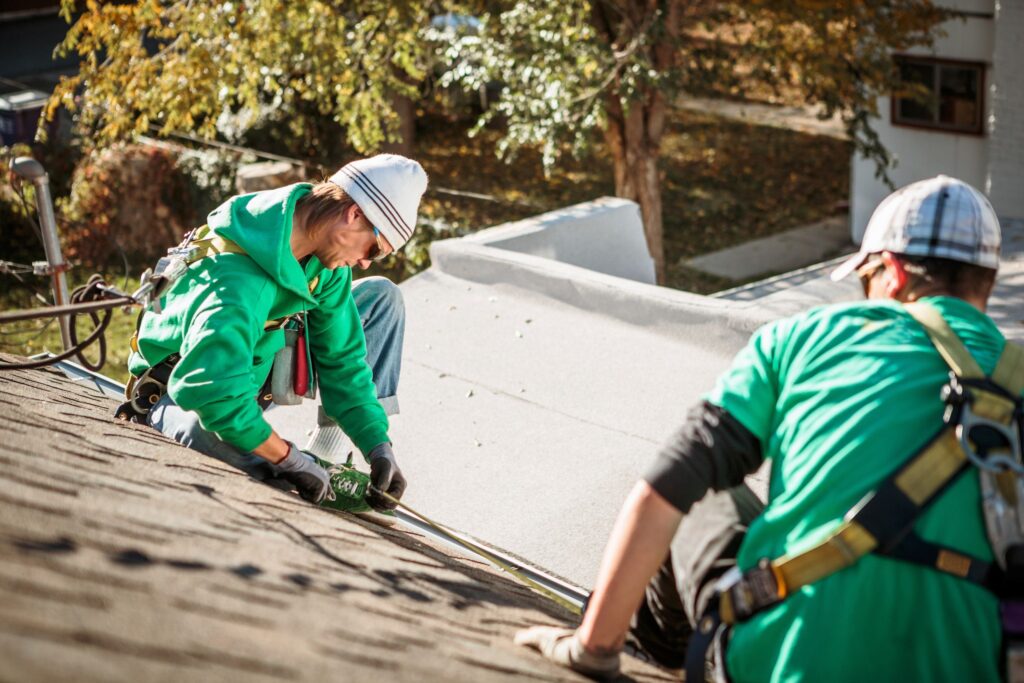Tile vs. Shingle: Choosing the Right Roof Replacement for Your Simi Valley Home

So… your roof is ready for a reboot. Maybe it’s curling at the edges, showing its age, or simply no longer standing up to Simi Valley’s intense sun. Either way, you’re ready for a roof replacement in Simi Valley—and you’ve got one big question to answer:
Tile or shingle?
At Infinity Roofers, we hear this all the time. Homeowners love the look of tile but wonder about weight and cost. Others lean toward shingles for the simplicity and price tag but worry about longevity.
The truth? Both options can be amazing—but for different reasons. In this guide, we’ll walk you through everything you need to know, from roofing material comparison and performance to style, maintenance, and long-term value. So, let’s dig in and help you figure out the best fit for your roof—and your lifestyle.
Understanding the Basics: What Are Tile and Shingle Roofs?
Before we get into the nitty-gritty, let’s quickly define what we’re talking about:
Tile Roofing
Typically made from clay, concrete, or slate, tile roofs are known for their durability, classic aesthetic, and high-end appeal. Tile roof replacement in Simi Valley is common in Spanish- and Mediterranean-style homes and HOAs that favor a polished look.
Asphalt Shingles
These are America’s most popular roofing options. Asphalt shingles come in many styles and colors, are relatively light, and offer solid protection at a wallet-friendly price.
Comparing the Core Features: Tile vs. Shingle
1. Durability & Lifespan
- Tile: You’re looking at 50+ years—sometimes even a century if properly maintained. It’s one of the most durable roofing materials on the market.
- Shingles: A typical lifespan ranges from 20 to 30 years, depending on the type and weather exposure.
If you’re planning to stay in your home for decades, tile may win in the long run. If you might sell within 10–15 years, shingles offer solid value.
2. Weight
- Tile: Heavy. Your home may need structural reinforcement.
- Shingles: Lightweight. Suitable for nearly all homes, even older ones.
Pro tip: Always talk to a pro about whether your home can support the added weight before committing to tile.
3. Cost
- Shingles: Lower upfront costs. Easier and quicker to install.
- Tile: Higher upfront investment but fewer replacements over time.
Simi Valley Climate: Why It Matters for Roof Selection
Let’s be real—Simi Valley’s not exactly gentle on roofing. Our Mediterranean climate brings:
- Intense sun and UV exposure
- Wildfire risks
- Santa Ana winds
- Occasional downpours
That means you’ll want a material that can handle heat, resist fire, and hold up in a sudden gust.
Tile Roofing and Simi Valley’s Climate
- Naturally resistant to sun damage
- Often rated Class A for fire resistance (ideal for wildfire-safe roofing)
- Less likely to degrade in dry heat
Shingle Roofing and Simi Valley’s Climate
- Cheaper to replace after storms
- May require more frequent maintenance in high-UV zones
- Class A fire-rated options are available but choose wisely
When choosing the best roof types for California homes, think beyond appearance—consider how your roof will perform under constant sun and heat.
Aesthetic Considerations: Form Meets Function
Simi Valley neighborhoods are diverse, but many communities (especially HOA-governed ones) lean into Mediterranean, ranch, or modern design. Your choice of roofing material will drastically affect curb appeal.
Tile Roofing
- Timeless look
- Enhances upscale or historic homes
- Works beautifully with stucco, arches, and earth-tone exteriors
Shingle Roofing
- Versatile and modern
- Available in dimensional and architectural styles
- Pairs well with contemporary, craftsman, and traditional homes
In terms of aesthetic roofing options, both shine in their own way—it just depends on your personal taste (and your HOA guidelines).
Energy Efficiency & Insulation
Simi Valley summers can be brutal—and your roof plays a significant role in regulating indoor temps.
- Tile Roofing: Excellent thermal properties. Helps insulate your home and reduce cooling bills. Available in “cool roof” options that reflect solar heat.
- Shingles: Many shingles now come with reflective granules that bounce UV rays and meet energy-efficient roof materials standards. Not as insulating as tile, but more budget-friendly.
Installation & Maintenance

Let’s talk logistics.
Installation:
- Tile: Takes longer to install, especially if your home needs structural reinforcement.
- Shingle: Quick and efficient. Great for tight timelines or budget-driven projects.
Maintenance:
- Tile: Low maintenance, but tiles can crack if walked on incorrectly. Underlayment may need replacement every 20–30 years.
- Shingle: Easier to replace sections but more prone to damage from wind, sun, and impact.
Tile needs less frequent attention, but shingle repairs are typically easier and cheaper when needed.
Real Talk: Which Roof Is Right for You?
Still stuck between the two? Here’s a quick cheat sheet:
| Category | Tile | Shingle |
|---|---|---|
| Lifespan | 50–100 years | 20–30 years |
| Cost (Upfront) | High | Moderate to low |
| Fire Resistance | Excellent (Class A) | Good (with proper materials) |
| Weight | Heavy (may need support) | Lightweight |
| Style | Classic, high-end | Versatile, modern |
| Maintenance | Low but technical | Moderate and accessible |
| Energy Efficiency | High | Medium to High (with upgrades) |
Ready to Replace Your Roof?
A new roof isn’t just a functional upgrade—it’s a chance to improve your home’s look, efficiency, and safety. At Infinity Roofers, we’ve installed both tile and shingle systems across Simi Valley and can walk you through which option fits your home, your budget, and your future plans.
Need to match your neighborhood? Curious about hidden costs? Wondering how long installation takes? We’ve got answers—and solutions.
Call Infinity Roofers today to schedule your no-pressure consultation and get a personalized plan for your roof replacement in Simi Valley.
FAQ: What Most Homeowners Don’t Think to Ask
Can you mix roofing materials, like tile in front and shingles in back?
It’s possible but not always recommended. Mixing materials can create uneven wear, water flow issues, and mismatched aesthetics. In some cases, such as ADUs or extensions, it may make sense. Talk to your contractor about structural considerations, flashing transitions, and visual impact before committing.
How do you know if your current roof structure can handle tile?
Your roofing contractor should conduct a structural inspection before recommending tile. They’ll check the rafters, underlayment, and framing for load-bearing capability. If reinforcement is needed, they’ll provide a scope of work and estimate. Never install tile without confirming your structure can safely support the weight.
Backtrack to Bust the Myths
Missed the First Article in the Series?
Five Common Misconceptions About Hiring a Roofing Contractor in Simi Valley
Think all contractors are the same? Think again. This article clears up the biggest myths Simi Valley homeowners believe about hiring the right roofer—don’t miss it!
